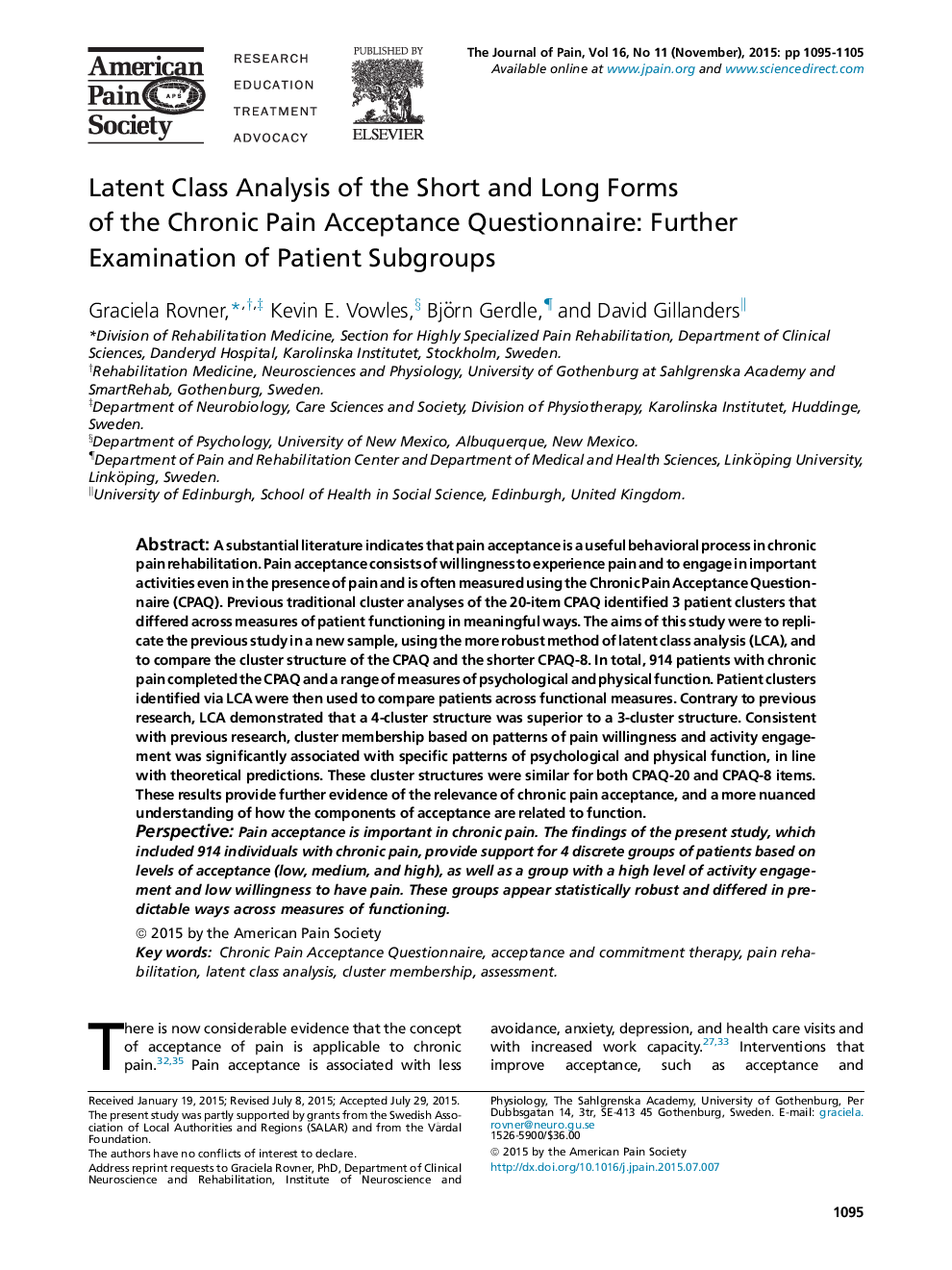| Article ID | Journal | Published Year | Pages | File Type |
|---|---|---|---|---|
| 2733558 | The Journal of Pain | 2015 | 11 Pages |
•Patients with chronic pain were clustered in 4 subgroups according to their pain acceptance levels.•Each pain acceptance cluster was significantly associated with patterns of functioning.•Both versions of the Chronic Pain Acceptance Questionnaire (CPAQ-20 and CPAQ-8) are useful instruments to identify cluster membership.
A substantial literature indicates that pain acceptance is a useful behavioral process in chronic pain rehabilitation. Pain acceptance consists of willingness to experience pain and to engage in important activities even in the presence of pain and is often measured using the Chronic Pain Acceptance Questionnaire (CPAQ). Previous traditional cluster analyses of the 20-item CPAQ identified 3 patient clusters that differed across measures of patient functioning in meaningful ways. The aims of this study were to replicate the previous study in a new sample, using the more robust method of latent class analysis (LCA), and to compare the cluster structure of the CPAQ and the shorter CPAQ-8. In total, 914 patients with chronic pain completed the CPAQ and a range of measures of psychological and physical function. Patient clusters identified via LCA were then used to compare patients across functional measures. Contrary to previous research, LCA demonstrated that a 4-cluster structure was superior to a 3-cluster structure. Consistent with previous research, cluster membership based on patterns of pain willingness and activity engagement was significantly associated with specific patterns of psychological and physical function, in line with theoretical predictions. These cluster structures were similar for both CPAQ-20 and CPAQ-8 items. These results provide further evidence of the relevance of chronic pain acceptance, and a more nuanced understanding of how the components of acceptance are related to function.PerspectivePain acceptance is important in chronic pain. The findings of the present study, which included 914 individuals with chronic pain, provide support for 4 discrete groups of patients based on levels of acceptance (low, medium, and high), as well as a group with a high level of activity engagement and low willingness to have pain. These groups appear statistically robust and differed in predictable ways across measures of functioning.
